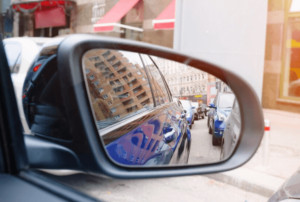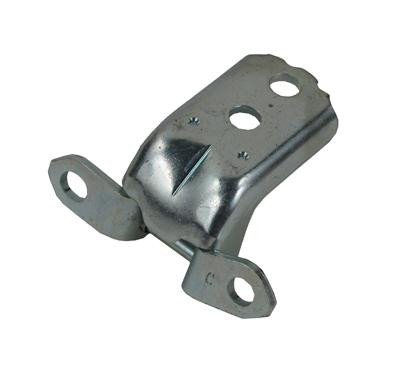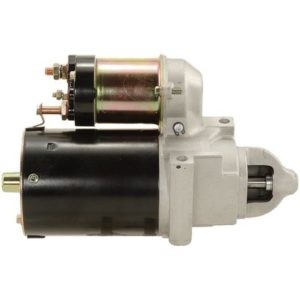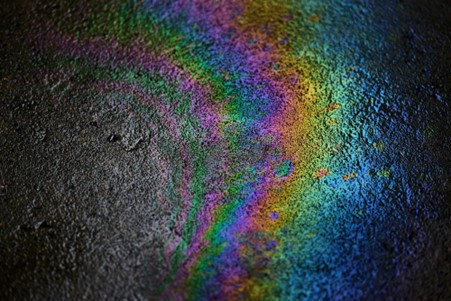How Much Is A Car Mirror To Fix?

Is “How Much Is A Car Mirror To Fix” on your mind? A damaged or missing car mirror impairs vision and violates traffic regulations. CARDIAGTECH.NET provides insights into repair costs, DIY solutions, and professional services, guaranteeing you stay safe and compliant without overspending. Get the full picture, explore options, and keep your vehicle in prime condition with functional mirrors, ensuring road safety and avoiding legal troubles.
1. Understanding Car Side Mirror Replacement Costs
The cost to fix a car mirror varies significantly based on several factors. The average car side mirror replacement cost is around $299, encompassing parts and labor. Parts typically range from $139 to $328, while labor adds about $90. Let’s explore the key factors influencing these costs:
-
Type of Mirror: Basic, manual mirrors are the most affordable. Electric mirrors, heated mirrors, and those with integrated turn signals or blind-spot monitoring systems increase the price.
-
Vehicle Make and Model: Luxury brands like BMW or Audi typically have higher replacement costs due to the complexity and price of their components. Mainstream brands generally have more affordable options.
-
OEM vs. Aftermarket Parts: Original Equipment Manufacturer (OEM) parts ensure perfect fit and quality but are pricier. Aftermarket parts are cheaper but might not offer the same quality or fit.
-
Labor Costs: Labor rates vary by shop and location. Dealerships often have higher labor rates than independent repair shops.
-
Additional Features: Features like blind-spot detection, lane departure warnings, and integrated cameras add to the complexity and cost.
 Side View Mirror Replacement Cost
Side View Mirror Replacement Cost
Alt text: Side mirror replacement cost impacting driving safety.
2. Breaking Down the Costs: Parts and Labor
To accurately estimate How Much Is A Car Mirror To Fix, it’s essential to understand the breakdown of costs between parts and labor.
Parts Costs
The cost of the side mirror itself depends on its features and whether it’s an OEM or aftermarket part. Here’s a general breakdown:
- Manual Mirrors: $50 – $150
- Electric Mirrors: $100 – $300
- Heated Mirrors: $150 – $350
- Mirrors with Turn Signals: $200 – $400
- Mirrors with Blind Spot Monitoring: $300 – $500+
OEM parts are typically 20% to 50% more expensive than aftermarket options. While aftermarket parts can save money, consider the potential compromise in quality and fit.
Labor Costs
Labor costs depend on the complexity of the replacement and the shop’s hourly rate. Most side mirror replacements take between 1 to 2 hours. Average labor rates range from $75 to $150 per hour.
- Simple Replacement: 1 hour ($75 – $150)
- Complex Replacement (with sensors or calibration): 2 hours ($150 – $300)
3. Additional Costs to Consider for Mirror Repair
Beyond the basic parts and labor, several additional costs can influence the total expense of fixing a car mirror.
Color Matching and Painting
If the replacement mirror’s housing doesn’t match your car’s color, you’ll need to factor in the cost of color matching and painting. This process ensures the mirror seamlessly blends with your vehicle’s aesthetic. On average, color matching and painting can range from $50 to $150, depending on the vehicle model and paint complexity.
Calibration
Mirrors equipped with indicators, sensors, or cameras often require calibration after replacement. This ensures all technological features function correctly and safely post-installation. The cost for calibration typically ranges from $75 to $200.
Insurance Deductibles
If you choose to claim the replacement on your insurance, you might need to pay a deductible. The deductible amount varies based on your policy and coverage extent. Reviewing your insurance policy can help you understand potential out-of-pocket expenses.
Hidden Fees
Always inquire about potential hidden fees before authorizing the repair. Some shops might add charges for disposal fees, environmental fees, or shop supplies. Clarifying these details upfront ensures transparency and avoids unexpected costs.
4. DIY vs. Professional Repair: Which Is Right for You?
Deciding between DIY and professional repair depends on your comfort level, technical skills, and the extent of the damage.
DIY Side Mirror Replacement
Pros:
- Cost Savings: DIY repair can save significantly on labor costs.
- Convenience: You can perform the repair at your own pace and schedule.
- Learning Experience: DIY projects can be a rewarding learning experience.
Cons:
- Technical Skills Required: Requires basic mechanical skills and familiarity with tools.
- Potential for Errors: Mistakes can lead to further damage or improper installation.
- Time Commitment: DIY repair can be time-consuming, especially for beginners.
When to DIY:
- Simple manual mirror replacement
- Basic tools and skills available
- Comfortable following instructions
Professional Side Mirror Replacement
Pros:
- Expertise: Professional technicians have the knowledge and experience for proper repair.
- Warranty: Professional repairs often come with a warranty on parts and labor.
- Convenience: Saves time and effort compared to DIY.
Cons:
- Higher Cost: Labor costs can significantly increase the overall expense.
- Scheduling: Requires scheduling an appointment and potentially waiting for the repair.
When to Go Professional:
- Electric, heated, or technologically advanced mirrors
- Lack of experience or tools
- Desire for warranty and guaranteed quality
5. Step-by-Step Guide: How to Replace a Car Side Mirror
If you decide to tackle a DIY side mirror replacement, follow these steps for a successful repair.
Tools and Materials Needed
- Replacement side mirror
- Screwdriver set (Phillips and flathead)
- Socket set
- Pliers
- Trim removal tool
- Safety glasses
- Gloves
- Adhesive (if needed)
Step-by-Step Instructions
- Gather Your Tools and Materials: Ensure you have all the necessary tools and a compatible replacement mirror.
- Prepare the Vehicle: Park your car on a level surface and turn off the ignition.
- Remove the Interior Panel: Use a trim removal tool to gently pry off the interior panel covering the mirror’s mounting.
- Disconnect Electrical Connections: If your mirror is electric or heated, disconnect any electrical connectors.
- Remove the Old Mirror: Use a socket set to unscrew the bolts holding the old mirror in place. Carefully remove the mirror.
- Install the New Mirror: Align the new mirror with the mounting holes and secure it with the bolts.
- Reconnect Electrical Connections: Reconnect any electrical connectors.
- Reinstall the Interior Panel: Snap the interior panel back into place.
- Test the Mirror: Ensure the mirror is properly adjusted and all features (electric, heated, signals) are functioning correctly.
- Clean Up: Dispose of the old mirror properly and clean any tools or materials.
6. Common Issues and How to Fix Them
Even with careful installation, some common issues might arise during or after a side mirror replacement.
Loose Mirror Glass
If the mirror glass is loose but not detached, tighten the screws at the base of the mirror. If detached, use an automotive mirror adhesive.
Cracked Trim Panel
Use an automotive plastic repair kit to bond the crack. These kits include everything needed and can be painted over to match the original color.
Malfunctioning Electrical Features
Check the electrical connections and fuses. Ensure all wires are properly connected and that no fuses are blown. If the problem persists, consult a professional.
Vibrating Mirror
Ensure all bolts and screws are tightened properly. If vibration continues, the mirror might not be properly seated or aligned.
7. Finding the Best Deals on Car Mirror Replacements
To minimize costs, explore different options and sources for car mirror replacements.
Online Retailers
Websites like Amazon, eBay, and specialized auto parts sites offer competitive prices and a wide selection of mirrors. Read reviews and compare prices before purchasing.
Local Auto Parts Stores
Local stores like AutoZone, Advance Auto Parts, and O’Reilly Auto Parts provide expert advice and the ability to physically inspect the parts before buying.
Salvage Yards
Salvage yards offer used parts at significantly reduced prices. While the parts might not be new, they can be a budget-friendly option if in good condition.
Discounts and Coupons
Check for discounts and coupons from online retailers and local auto parts stores. Many offer promotional codes or special deals for online purchases.
8. Insurance Coverage for Side Mirror Replacement
Depending on your insurance policy, side mirror replacement might be covered.
Comprehensive Coverage
Comprehensive coverage typically covers damage from incidents other than collisions, such as vandalism, theft, or weather-related events.
Collision Coverage
Collision coverage usually covers damage from accidents involving other vehicles or objects.
Deductibles
If your insurance covers the replacement, you’ll likely need to pay a deductible. Consider whether the cost of the repair exceeds your deductible before filing a claim.
Filing a Claim
When filing a claim, provide detailed information about the incident, including photos and any relevant documentation. Work with your insurance adjuster to understand the coverage and claim process.
9. Maintaining Your Car Mirrors to Prevent Damage
Preventative measures can help extend the life of your car mirrors and avoid costly replacements.
Regular Cleaning
Regularly clean your car mirrors with a microfiber cloth and glass cleaner to remove dirt, debris, and water spots.
Protective Coatings
Apply protective coatings designed for automotive mirrors to repel water and prevent damage from UV rays and environmental factors.
Avoiding Collisions
Practice safe driving habits and maintain awareness of your surroundings to avoid collisions that can damage your mirrors.
Proper Parking
When parking, fold in your mirrors to protect them from being hit by passing vehicles or pedestrians.
10. Advanced Features: Blind Spot Monitoring and More
Modern side mirrors often come equipped with advanced features that enhance safety and convenience.
Blind Spot Monitoring (BSM)
BSM systems use sensors to detect vehicles in your blind spots, providing visual or audible alerts to help prevent accidents.
Heated Mirrors
Heated mirrors melt ice and snow, improving visibility in cold weather conditions.
Integrated Turn Signals
Integrated turn signals enhance visibility, making it easier for other drivers to see your intentions.
Automatic Dimming
Automatic dimming mirrors reduce glare from headlights, improving nighttime visibility.
These advanced features contribute to the overall cost of side mirror replacement but offer significant safety and convenience benefits.
11. Real-World Examples: Cost Scenarios
To illustrate the range of costs, here are a few real-world scenarios:
Scenario 1: Basic Manual Mirror Replacement
- Vehicle: Older Honda Civic
- Mirror Type: Basic manual mirror
- Part Cost: $60 (aftermarket)
- Labor Cost: $80 (1 hour at $80/hour)
- Total Cost: $140
Scenario 2: Electric Mirror Replacement with Painting
- Vehicle: Newer Toyota Camry
- Mirror Type: Electric mirror with turn signal
- Part Cost: $250 (OEM)
- Labor Cost: $120 (1.5 hours at $80/hour)
- Painting Cost: $80
- Total Cost: $450
Scenario 3: Luxury Vehicle Mirror Replacement with BSM
- Vehicle: BMW 3 Series
- Mirror Type: Electric mirror with blind spot monitoring and heated glass
- Part Cost: $450 (OEM)
- Labor Cost: $150 (2 hours at $75/hour)
- Calibration Cost: $100
- Total Cost: $700
12. Finding Reliable Repair Shops
Choosing a reliable repair shop is crucial for a successful side mirror replacement.
Ask for Recommendations
Seek recommendations from friends, family, or colleagues. Personal referrals often lead to trustworthy service providers.
Read Online Reviews
Check online review sites like Yelp, Google Reviews, and the Better Business Bureau to gauge customer satisfaction and service quality.
Check for Certifications
Look for shops with certifications from organizations like ASE (Automotive Service Excellence). Certified technicians have demonstrated expertise and commitment to quality.
Get Multiple Quotes
Obtain quotes from multiple shops to compare prices and services. Ensure the quotes include all costs, including parts, labor, and any additional fees.
Inquire About Warranty
Ask about the shop’s warranty policy. A reputable shop should offer a warranty on both parts and labor.
13. Case Studies: Success Stories
Real-life examples can provide insights into successful side mirror replacements.
Case Study 1: DIY Success
- Customer: John, a car enthusiast with basic mechanical skills
- Vehicle: Older Ford F-150
- Issue: Damaged manual side mirror
- Solution: John purchased an aftermarket mirror online for $50 and replaced it himself in about an hour, saving approximately $100 in labor costs.
Case Study 2: Professional Expertise
- Customer: Sarah, a busy professional with limited time
- Vehicle: Newer Honda Accord with electric mirror
- Issue: Damaged electric side mirror
- Solution: Sarah took her car to a certified repair shop, where technicians replaced the mirror with an OEM part for $350, including parts and labor. The repair came with a warranty, providing peace of mind.
Case Study 3: Insurance Coverage
- Customer: Mike, a driver with comprehensive insurance coverage
- Vehicle: Toyota Camry with blind spot monitoring
- Issue: Side mirror damaged by vandalism
- Solution: Mike filed a claim with his insurance company, paid his $200 deductible, and had the mirror replaced at a dealership for $600.
14. Legal Considerations: Driving with a Damaged Mirror
Driving with a damaged or missing side mirror can have legal consequences.
State Laws
Most states require vehicles to have at least two functioning mirrors: one rearview mirror and one side mirror. Some states require both side mirrors.
Visibility Requirements
Mirrors must provide a clear and unobstructed view of the road and traffic behind and to the sides of the vehicle.
Penalties
Driving with a non-compliant mirror can result in fines, tickets, and potential liability in the event of an accident.
Safety Concerns
Beyond legal requirements, driving with a damaged mirror compromises safety by reducing visibility and awareness of surroundings.
15. The Future of Car Mirrors: Technology and Innovation
The future of car mirrors is rapidly evolving with technological advancements.
Digital Mirrors
Digital mirrors use cameras to display a live video feed on an interior screen, providing a wider field of view and improved visibility in various conditions.
Smart Mirrors
Smart mirrors integrate sensors, displays, and connectivity features to provide real-time information, such as traffic updates, weather conditions, and navigation.
Augmented Reality (AR)
AR technology overlays digital information onto the mirror’s surface, providing drivers with additional insights and alerts.
Self-Repairing Mirrors
Researchers are developing self-repairing materials that can automatically fix minor scratches and damage, extending the lifespan of car mirrors.
16. Environmental Impact: Recycling and Disposal
Proper recycling and disposal of old car mirrors are essential to minimize environmental impact.
Recycling Glass
The glass from car mirrors can be recycled, reducing the need for raw materials and energy in glass production.
Recycling Plastics
The plastic components can be recycled into new plastic products, reducing waste and conserving resources.
Proper Disposal
Dispose of any non-recyclable components properly, following local regulations and guidelines.
Environmental Benefits
Recycling and proper disposal help reduce landfill waste, conserve natural resources, and minimize pollution.
17. FAQs: Addressing Common Questions
To address frequent inquiries, here are some frequently asked questions about car mirror replacements.
How long does it take to replace a side mirror?
Most side mirror replacements take between 1 to 2 hours, depending on the complexity of the mirror and the vehicle.
Can I drive with a broken side mirror?
Driving with a broken side mirror is illegal in many states and compromises safety. It’s best to replace it as soon as possible.
What’s the difference between OEM and aftermarket mirrors?
OEM mirrors are made by the original manufacturer and ensure a perfect fit and quality. Aftermarket mirrors are made by third-party companies and are often cheaper but might not offer the same quality or fit.
Will my insurance cover a side mirror replacement?
Depending on your policy, comprehensive or collision coverage might cover the replacement. Check with your insurance provider.
How can I prevent my side mirror from being damaged?
Regularly clean your mirrors, apply protective coatings, avoid collisions, and fold in your mirrors when parking.
What are the benefits of heated mirrors?
Heated mirrors melt ice and snow, improving visibility in cold weather conditions.
Are digital mirrors better than traditional mirrors?
Digital mirrors offer a wider field of view and improved visibility in various conditions, but they can be more expensive.
How do I choose a reliable repair shop?
Ask for recommendations, read online reviews, check for certifications, get multiple quotes, and inquire about warranty policies.
Can I replace just the mirror glass instead of the entire assembly?
In some cases, you can replace just the mirror glass, which is a more affordable option. However, this might not be possible if the entire assembly is damaged.
What tools do I need for a DIY side mirror replacement?
You’ll need a screwdriver set, socket set, pliers, trim removal tool, safety glasses, gloves, and adhesive (if needed).
18. Conclusion: Making Informed Decisions
Understanding the costs, options, and considerations involved in car mirror replacement empowers you to make informed decisions. Whether you choose DIY repair or professional service, prioritizing safety and compliance ensures a smooth and stress-free experience.
Contact CARDIAGTECH.NET for Expert Advice
Navigating car repairs can be daunting, but CARDIAGTECH.NET is here to help. If you’re facing challenges with your car mirrors or need advice on the best tools and solutions, don’t hesitate to reach out. Our team of experts is ready to provide personalized recommendations and support to get you back on the road safely and efficiently.
For immediate assistance, contact us via WhatsApp at +1 (641) 206-8880 or visit our website at CARDIAGTECH.NET. Our address is 276 Reock St, City of Orange, NJ 07050, United States. We’re committed to offering top-notch service and guidance to keep your vehicle in optimal condition. Let CARDIAGTECH.NET be your trusted partner in automotive care.
Ready to take the next step?
- Need immediate assistance? Contact us via WhatsApp at +1 (641) 206-8880 for quick support and expert advice.
- Prefer to browse our catalog? Visit CARDIAGTECH.NET to explore our wide range of automotive tools and solutions.
- Have specific questions? Reach out to our team, and we’ll provide personalized recommendations to meet your needs.
- Want to visit us in person? Find us at 276 Reock St, City of Orange, NJ 07050, United States.
Alt text: Contact CarDiagTech for car repair solutions.
Remember, at CARDIAGTECH.NET, we’re not just about providing tools; we’re about ensuring your safety and satisfaction. Reach out today, and let us help you keep your vehicle running smoothly and safely. Your journey towards a hassle-free car repair experience starts here.






